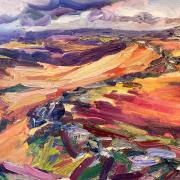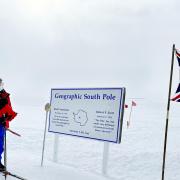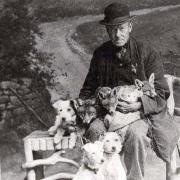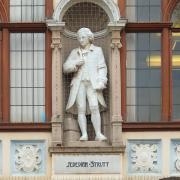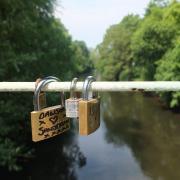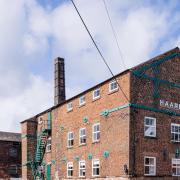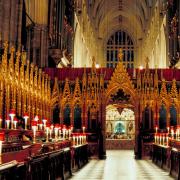Sally Mosley visits William Lennon & Co in Stoney Middleton, the last heavy duty boot manufacturer in the UK

Derbyshire is hanging on by its toecaps to the manufacture of working and safety boots. Due to the demand from lead miners and quarry workers over the last few hundred years at least a dozen boot factories set up in the Eyam and Stoney Middleton areas alone, and more were established in Great Longstone where The Crispin Inn is a reminder of the Patron Saint of Cobblers.
There is now only one boot factory left in Derbyshire. William Lennon and Co Ltd www.williamlennon.co.uk in Stoney Middleton is the last heavy duty boot manufacturer in the UK.
This small family firm is now in its fourth generation and as I was given a guided tour of their works I felt extremely privileged. It was established by William Lennon, a descendant of Irish immigrants and an orphan from Chorlton-cum-Hardy, near Manchester, who became an apprentice boot maker. In 1899 he branched out on his own when he married Grandma Charlotte Goddard and began working from their small front room.
In 1904 a redundant water-powered corn mill came up for sale in Stoney Middleton. William bought it and his business has been running from there ever since. Originally powered by paraffin rather than water, electricity was introduced in 1933.

Libs Slattery and Dan Walker are William’s great grandchildren and current Directors of William Lennon and Co. There are eight employees, including Michael the factory manager and Phil the ‘clicker’, James and Glen work mainly in the ‘lasting’ room, Helen is the ‘finisher and polisher’ and Pat the ‘closer’ & ‘skiver’ who is over 70 and has worked in the factory since leaving school.
There are various fascinating boot-making terms and skiving is the process of shaving off an edge to the leather to make it easier to sew a seam. Clicking is the acquired skill of cutting the pieces and learning what leather to use for each part of the boot.
The old mill, with Dale Brook running beneath the factory floor, is unassuming from the outside and generally unknown to the steady stream of motorists who pass by on the main road. Within, however, is a time warp that pays homage to the early days of mechanical boot manufacture. There are ancient cast iron machines alongside an array of modern devices, rows of strange looking tools amid a chaos of shelves littered with hides of assorted leather, cut-outs ready for the next process and boxed, finished boots.
Daylight streams in to the old fashioned workshops through cobwebbed windows. On the wall of the factory Grandad Arnold Lennon’s antique clock keeps perfect time, wound up every day by Phil, whilst a rabbit warren of rooms accessed by old wooden stairways, smell of leather and grease. A cacophony of whirring, clicking, thumps, bumps and the constant rattle of machines attacks the ears.

Some of the machines are stamped with ancient patents. Many are affectionately known by individual names such as the Puritan machines (made in Boston USA in 1893). However, I was told the one to watch out for is ‘The Beast’ which shapes the soles from flat leather sheets and needs complete concentration by the operator at all times.
Some of the machines have a row of pedals and a clutch. Unlike modern computerised factory processes, the Lennon operatives are in charge of driving their machines, not the machines driving them!
If one of the older machines breaks down, spare parts have long since become unobtainable and have to be repaired ‘in-house’ or made by specialist engineering works.
Some William Lennon’s boots are unique; their design can never be stolen as they are made using a very old brass wire screwing machine. There are only five of these rare machines left in the world, Lennon’s own three whilst the others are in Australia and New Zealand and not in use. As Libs proudly stated, ‘No other firm can put soles on like us!’

Several years ago William Lennon’s decided not to compete with cheap imports, but to stick to their values of making quality and unique full leather walking and working boots for the higher end market. No gimmicks, no man-made materials, just leather riveted, screwed and stitched. Boots that mould themselves to the shape of your feet – worn in but never likely to wear out!
A bonus to standard manufacturing came with the demand for footwear used in filming and re-enactments. Lennon’s boots recently featured in episodes of Mr Selfridge and Downton Abbey! David Upton from Baslow, a member of The Great War Society, was instrumental in helping the firm obtain orders to produce replica World War One boots. After digging about in the sheds, Libs’ father Les Lennon, found the original 2181 square toe lasts that dated from the Great War years, enabling them to be replicated precisely. Rather interestingly and for what reason no one now knows, the B5 WWI boot was made inside out, using brown leather with the toughest side closest to the soldier’s skin.
Thanks to online sales, boots are now being exported around the globe. One pair is treading the footways of Fiji, whilst James and Glen are currently working on a pair of size 15 boots made from an authentic press for an intrepid explorer planning to climb Everest in replica 1950s clothing and footwear! This 21st century ‘Edmund Hilary’ plans to climb the iconic mountain wearing William Lennon boots over hand-knitted socks. Monty Don evidently has a pair for gardening in that have featured on his TV gardening programmes.
The biggest pair of boots ever made here were size 18 and like boats, but there is also a lot of demand for smaller boots, down to a size 3 thanks to William Lennon’s now being ‘big’ in Japan.
As well as industrial, agricultural and country footwear, the factory makes specialist boots for shepherds, farmers and for tug-of-war participants. They have been manufacturing their own ‘ruff-lander’ footwear since 1904 – more than a century of boot making knowledge!
A recent edition to the line up of boots is the Arturo, an all leather vintage style cycling shoe. ‘These are as dainty as it gets!’ said Libs. ‘We also manufactured colour-coded boots for Nestle with blue and green for employees working in an area with nuts to avoid cross contamination!’
Although nowadays they have no choice to source some base materials from abroad, certain types of leather are purchased from Claytons Tannery in Chesterfield, leather insoles come from Northampton whilst horseshoe heels and hob nails come from Leeds.
In recent years legislation has found its way into the factory. CE regulations apply with the firm having to obtain a license to make safety boots. Samples of these are sent away for health and safety checks including slip resistance and to test the shock absorbency of their toe caps.
So what are William Lennon’s business projections for the future of this unique firm? I am pleased to report that there are no plans for expansion or relocation to a sterile industrial unit with a line-up of modern computerised machines. This ‘load of old cobblers’ are proud to remain standing in Stoney Middleton, with knives in their hands and leather sewn into their souls!






